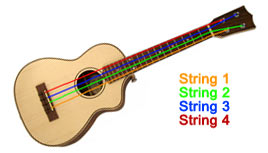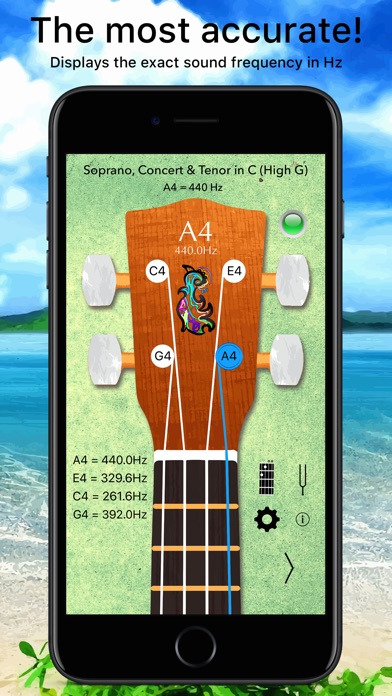
The vast majority of song tabs, chord charts, and other ukulele resources, are written with the assumption of gCEA ukulele tuning. The most popular ukulele tuning is known as gCEA. Each of the four letters of the tuning name denote the corresponding string on the ukulele, starting from the bottom (the string closest to your chest). Tunings denote this with a lower case letter, as in the standard tuning, gCEA.

On the uke, the botttom-most string is typically tuned to a note that is higher than the note on the 2nd bottom-most string. It is recommended to use these tunings, but other tunings can be useful for more experimental work. While the ukulele can be tuned to a wide range of notes, there are a handful of commonly used tunings that are recommended for playing popular music. As long as you are on a device with a microphone (like a phone, tablet, or laptop), you can use our microphone-based tuner above. You will be able to see visually whether the note is either too flat or too sharp, which you can use to adjust the tension of the ukulele string. You can play each string on the ukulele directly into a microphone, which can provide real-time feedback as you play. The simplest method for tuning a ukulele is to use a microphone-based tuner. Below, we'll go through more details of the common ukulele tunings. This is particularly important when playing with other musicians, in order to create harmonies and avoid discordant sounds. Each time you play your ukulele, it is very important to ensure that the instrument is in tune. String instruments like the ukulele have tuning pegs, which can be turned in both directions to either raise or lower the pitch that corresponds to one of the ukulele strings. This process is called tuning, in which the instrument is carefully tuned to specific pitches. This site doesn't work properly ? Read this help page.All instruments need to be set to exact pitches in order to play music in modern scales.

Once done, continue to adjust the string so that no yellow bar is displayed. If the note displayed is not E2 but another one lower (respectively higher), tighten (respectively loosen) the string till tuner displays E2. Pick low E string (fat string) which must be tuned to the E2 note. The notes corresponding to each string appear : E2 A2 D3 G3 B3 E4. Then continue to act on your instrument so that no yellow bar is displayed. To help you, many tunings are listed : guitar, 12 string guitar, bass guitar, 5 string bass guitar, 6 string bass guitar, 4 string banjo, 5 string banjo, mandolin, ukulele, violin, viola, cello, double bass.Īct on your instrument so that the note displayed is the one you want to tune to. However, whenever yellow bars appear, the sound played isn't in tune with the displayed note.įor tuning your instrument, you have to know the name of the note and its octave (example : E2). If several green bars appear but no yellow bar, then the sound played is still in tune with the displayed note.

If only central green bar appears this means that the sound played is perfectly in tune with the displayed note. It analyzes the sound captured by the microphone then displays the nearest note to this sound and the distance between them. Therefore, it allows you to tune any musical instrument : guitar, bass guitar, ukulele, banjo, mandolin, violin, viola, cello, double bass. The online tuner is chromatic and uses your microphone.
#Online uke tuner sound download#
You have to download Flash Player to access the content of this website.


 0 kommentar(er)
0 kommentar(er)
